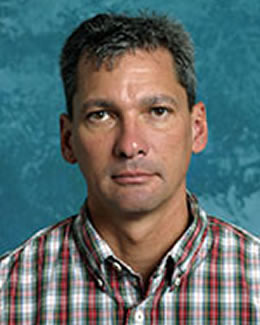2014 Research Catalyst Grantee

Paul Spruell
Southern Utah University
Project Title
Water Chemistry and Microbial Community Composition and Diversity in Irrigation Runoff Waters in Cedar City, Utah
Abstract
Irrigation of lawns and gardens in Cedar City, Utah is accomplished in two fundamentally different manners. In older neighborhoods, water is diverted from a natural stream (Coal Creek) into a series of canals and ditches. This water is then diverted by residents to flood irrigate lawns and gardens. Excess water returns to the open irrigation system by way of return ditches or overflow of driveways and sidewalks. In newer neighborhoods, water is delivered by more traditional underground municipal water system and irrigation water is typically applied using spray or drip irrigators. The overarching goal of this project is to better understand the chemical and biological changes that may occur in irrigation and runoff waters in Cedar City. We will attempt to achieve this goal by addressing the following four research questions. 1) What changes do we observe in water chemistry as water moves from Coal Creek through the streets, lawns, and gardens of Cedar City? 2) Are changes in water chemistry associated with specific changes in the microbial communities within Cedar City irrigation water? 3) Do differences in watering strategies result in different water chemistry characteristics during periods of high precipitation? 4) Do differences in neighborhood characteristics influence the answers to questions one, two, and three above? We will address these questions using a combination of traditional measures of water quality as well as examination of the species composition and diversity of bacterial and algal communities at various times and locations along the irrigation network. In addition to the research component of this work, this project also includes a formal collaboration between SUU and USU as well as contributions toward iUTAH’s goal of increasing undergraduate education regarding water resources.
Collaborators
Douglas Jackson-Smith, Utah State University


